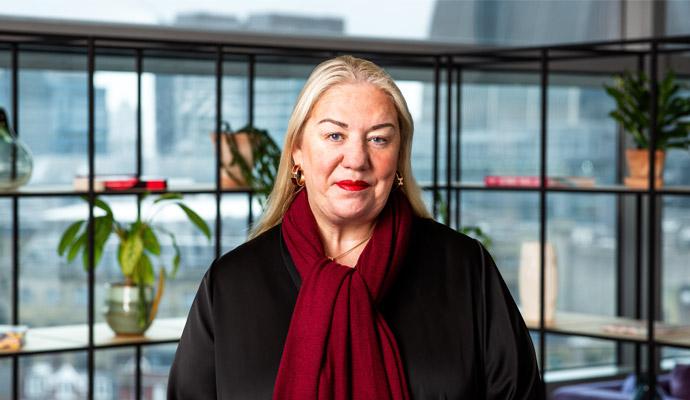Learning From the Turnaround at AK Steel
AK Steel went from industry laggard to industry leader. Its transition has a great deal to teach business about transformation.
The ak steel Corporation consistently earns among the highest profits per ton of steel, double that of such traditional leaders as U.S. Steel and Bethlehem and challenging even Nucor, the inventor of the modern steel industry in the United States. But AK is not a startup with a shiny new mill and a compliant, non-union work force in a Southern state.
In fact, it is a century-old company with a unionized work force in the heart of the rust belt -- based in Middletown, Ohio, about midway between Dayton and Cincinnati. And just five years ago, when Thomas C. Graham signed on as chief executive and president, it seemed to be on its last legs.
"At that point, we were the worst steel company in the world," Mr. Graham said. "We were losing $40 to $50 a ton at a time when the rest of the industry was losing $20 a ton. And we were facing $700 million in bank loans that were coming due in 1995 and that, based on our 1992 performance, we did not have a prayer of repaying."
Today, AK is not only rescued from the threat of insolvency, but it is building a $1.1 billion mill in Rockport, Ind., so that it can compete in the premium end of the steel industry, leaving the dozen or so other new mills also being built in this country to slug it out over lower-priced products.
How Mr. Graham led AK away from the brink of disaster to become king of the hill is a story that offers lessons to managers no matter how far their companies are from the rust belt.
At its core, AK's comeback is a classic case of crisis control, one that involved the deployment of a new team of savvy executives to rebuild strategy and see to its execution. As part of that process, the new team showed a willingness to challenge the assumptions of the past. Among other things, that meant a sophisticated, tough evaluation of AK's manufacturing capabilities, leading to the shutting of some facilities and the rejiggering of the company's product mix.
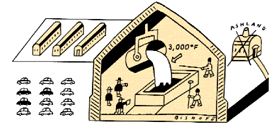
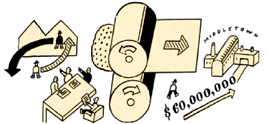
It resulted as well in a fierce determination to take control back from a supposed savior, Kawasaki Steel of Japan, which bought a 50 percent interest in the beleaguered company, then known as Armco Steel, from its parent, Armco Inc., in 1989.
The new managers also enjoyed a measure of good luck. The rescue effort was happening at a time when the United States was becoming the manufacturing location of choice for international automobile companies and other big steel consumers. Companies like BMW and Mercedes-Benz have built factories in the United States to produce models they plan to sell worldwide, and Japanese producers have expanded their operations here as well.
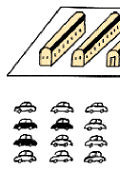 In 1987, when 15 million cars and light trucks were sold in the United States, only 10.7 million were made here. But by the mid-1990's, when sales were again at the 15 million level, 12 million were produced locally. Auto industry suppliers anticipate that between 1 million and 1.5 million additional cars and light trucks will be manufactured in this country annually over the next few years.
In 1987, when 15 million cars and light trucks were sold in the United States, only 10.7 million were made here. But by the mid-1990's, when sales were again at the 15 million level, 12 million were produced locally. Auto industry suppliers anticipate that between 1 million and 1.5 million additional cars and light trucks will be manufactured in this country annually over the next few years.
The bigger numbers have paid off in plenty of new business for steel companies since the transplanted auto makers have committed themselves to using up to 90 percent domestic steel, rather than shipping in components from their home bases.
But that was all in the future when the new managers first showed up for work at AK in 1992.
To make sure that the company itself would have a future, the new team began by eliminating a crutch in the production process, one that was crippling AK's competitiveness.
Most steel made today is transformed from the molten to solid form in a machine called a continuous caster. Liquid steel is poured into the top of the caster, which is shaped like a rounded L, and it emerges as a red hot but solid slab, about 8 to 10 inches thick. Casters are productive machines, but like anything else handling liquid metal at 3,000 degrees Fahrenheit, they are often difficult to operate.
To supplement production by casters, managers under the old regime at AK also used to pour liquid steel into ingots, large rectangular forms that hold the steel while it cools. But the use of ingots is costly, because the solidified steel has to be handled and reheated before it can be rolled in enormous presses into the flat sheets that become automobiles, appliances and furniture. Continuously cast steel, by contrast, can go directly to the rolling mill, with much less labor, reheating and energy consumption.
Within a month of becoming chief executive on June 1, 1992, Mr. Graham stopped all ingot production at the company's two plants, in Middletown and in Ashland, Ky.
"There were casters at both plants that were performing badly, and to cover the shortfall we were pouring ingots," he said. "Within the first week I was there, I said we had to eliminate the ingots. And by July 1, the ingots and all the facilities associated with them were shut down."
Tom Graham is a legend in the steel industry. He revived the U.S. Steel operations at the USX Corporation in the late 1980's, when they were losing $1 billion a year. He did it by closing obsolete plants and focusing on products for which a company that made steel from raw ore had a competitive advantage. He conceded low-value products, like the bars used to reinforce concrete in roadways, to the highly efficient mini-mills operated by Nucor and others, because the uneven quality of the scrap steel they use has little effect on such a low-grade product.
He concentrated instead on the higher-quality sheet steel market, where a traditional "integrated" mill using blast furnaces has the advantage since it can control the chemistry and surface quality of the product better than the mini-mills. This is the reason why traditional producers, with their ossified union work rules and staggering retirement and health care costs, have been able to stay in business.
After retiring from USX in 1991, Mr. Graham was enlisted to take control of the bankrupt Washington Steel Corporation, which he doctored and merged with another company. Then the call came from AK.
Much of what Mr. Graham did after arriving was textbook turnaround tactics. He replaced existing managers with people he had come to trust during his long career in the industry, including the current chief executive, Richard Wardrop. He sold off non-essential assets, including the company golf course, to raise cash. He shed peripheral operations, such as security, to outside contractors.
Most importantly, he looked at the company with the eye of an outsider.
"One notion that was causing confusion was the deeply imbedded idea that this was a two-plant company, and that the two plants had to be treated equally," he said. "If you spent capital in Middletown, you had to spend it in Ashland."
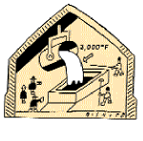 His evaluation, honed by years in hot, dirty mills, was that the company was operating too much equipment for the amount of steel it was shipping and was thus using too much labor. AK needed 6.5 man-hours to make a ton of steel, compared with 3 to 4 hours at the average integrated mill and less than 1 hour at mini-mills.
His evaluation, honed by years in hot, dirty mills, was that the company was operating too much equipment for the amount of steel it was shipping and was thus using too much labor. AK needed 6.5 man-hours to make a ton of steel, compared with 3 to 4 hours at the average integrated mill and less than 1 hour at mini-mills.
But before anything could be shut down, the productivity of what was to remain had to be improved. That was Dick Wardrop's job. While Tom Graham set overall policy and fended off representatives of Kawasaki, who had their own ideas about what needed to be done, Mr. Wardrop was to attend to production and quality.
"Armco had invested a lot in Middletown," Mr. Wardrop said, particularly in the brawny mill that rolls hot slabs of steel into coiled sheets. "There was a lot of latent capacity waiting to be tested and used."
He said the problem was not with the unionized work force, but with managers who did not believe productivity could be improved. Replacing them with industry veterans who had greater vision made the difference.
"Middletown had been rolling 200,000 tons a month," Mr. Wardrop said. "We quickly got that up to 300,000. Now, we routinely do 420,000 to 430,000."
Even critics of the company acknowledge its success. Michael Locker, a labor-oriented steel analyst, observed: "AK's strategy -- which is to make more efficient and productive use of its existing integrated technology to produce high-quality, value-added products that command healthy prices -- is an intelligent response to market trends, but it is not revolutionary. Other integrated producers . . . claim to be following similar strategies. What separates AK is its seemingly unique ability to execute its strategy."
There were no magic bullets, both Mr. Graham and Mr. Wardrop said. Instead, there were hundreds of small changes, such as buying harder-surfaced rollers for the giant machines that squeeze steel into thin sheets (to increase the time before the rollers had to be changed) and reorganizing maintenance so there were fewer breakdowns.
To do this, Mr. Graham and Mr. Wardrop had to win the confidence of mill workers and lower levels of management, a far more difficult job than ordering shutdowns.
In their book on AK and other successful steel companies, "The Renaissance of American Steel"(Oxford University Press, 1996), Profs. Roger S. Ahlbrandt of Portland State University, Richard J. Fruehan of Carnegie-Mellon and Frank Giarratani of the University of Pittsburgh noted that the most important job for top executives is instilling confidence.
"People cannot be asked to do something they think is impossible," they wrote, "and when a dramatic change is made in the status quo, it may be difficult for many people to recognize the firm's real potential. Because of this, success in restructuring often comes down to helping others see and seize the opportunities for improvement. Good managers recognize the constraints on performance, and work to relax them, if possible."
As for Mr. Graham, the authors said that his approach was both simple and direct. "He recognizes the importance of leadership and instilling a sense of direction and purpose in those who work for him," they wrote. "To accomplish this, he gets involved personally by reaching out to those he believes are in the best position to know where opportunities lie."
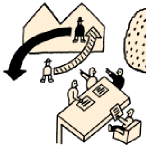 For his part, Mr. Graham describes the process in practical terms. "We had a series of evening meetings -- I called them prayer meetings -- with operating managers at the local hotel," he recalled in a recent interview. "I probed and pushed and cajoled to get out of them what the problems were behind our poor manufacturing performance."
For his part, Mr. Graham describes the process in practical terms. "We had a series of evening meetings -- I called them prayer meetings -- with operating managers at the local hotel," he recalled in a recent interview. "I probed and pushed and cajoled to get out of them what the problems were behind our poor manufacturing performance."
It was through these meetings that he concluded that some equipment had to be shut down. The bulk of the cutbacks were made at Ashland, which had old, narrow equipment incapable of producing the broad sheets of steel most prized by automobile and appliance manufacturers. "Prior management talked about shutting down most of Ashland because it was a small, low-quality mill, but they never did it," Mr. Wardrop said. "So we did."
Pulling the plug on most of the Ashland plant (a blast furnace, caster and one finishing line survived) reduced the company's work force by 700 people, about 7 percent of the total, and forced the rolling mills at Middletown to become more productive to handle the local output as well as slabs shipped in from Ashland.
There were the inevitable complaints from union leaders at the United Steelworkers in Ashland and the Armco Employees Independent Federation in Middletown. Both Mr. Graham and Mr. Wardrop said they did not pay much attention.
"Union hierarchies will always behave like union hierarchies," Mr. Wardrop said. "It does not matter if you send in Jesus Christ or Santa Claus, they won't like him."
He said there is a sharp distinction between union officials and the rank and file. "Our work force is very good and very proud," he said. "It was a leadership issue. They wanted a leader."
After closing most of the operations at Ashland, AK began spending modest amounts of money -- in the range of $30 million to $60 million a year -- to improve operations at Middletown and to expand the ability to produce high-priced, smooth galvanized sheet steel.
In Tom Graham's world, capital spending decisions are not designed to win popularity contests and are very much a chief executive function.
"The one thing a C.E.O. can never delegate away is the responsibility for the capital, and I don't," the professors quoted him as saying. "As hard as it may be, you have to spend the money where it will do the most good and that is in the areas of highest priority, given the markets you serve. You can't throw it away out of compassion or a sense of equity. You can't run away from the unpleasantness associated with turning people down."
Mr. Wardrop, who became chairman when Mr. Graham retired again in January 1997 at the age of 70, said a key part of the strategy for reviving AK was to drive relentlessly toward the top end of the sheet steel market.
At the very top of that market are sheets that have been chemically cleaned and coated with zinc or another substance to inhibit rust, like those used in the outer panels of cars with 100,000-mile rust-through warranties. Next in the pecking order are sheets that have been rerolled at room temperature in enormously powerful mills (AK's cold mill at Rockport will have 60,000 horsepower) to decrease their thickness and to improve the smoothness of the surface. At the low end are the sheets rolled from red-hot slabs, known as hot band. They are made into products whose appearance is less important than doing the job at a low price.
At the very bottom of the heap are hot-rolled sheets that do not meet minimum standards for primary customers. These sheets, which are called secondary products and result from production errors, can still be sold at low prices to less-demanding customers.
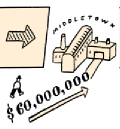 "When we got there, we were producing 17 percent secondary," Mr. Wardrop said in an interview. "You can sell it, but you don't even break even. So we decided to walk away from those customers." Nonetheless, some secondary always manages to be produced. Today, AK makes less than 7 percent secondary; through increased quality controls, it plans to drive that share below 5 percent by 2000.
"When we got there, we were producing 17 percent secondary," Mr. Wardrop said in an interview. "You can sell it, but you don't even break even. So we decided to walk away from those customers." Nonetheless, some secondary always manages to be produced. Today, AK makes less than 7 percent secondary; through increased quality controls, it plans to drive that share below 5 percent by 2000.
In fact, when the Rockport mill begins to open in December 1998, AK plans to leave the hot-band business almost entirely, figuring that the spate of new mills capable of producing that kind of product at very low cost will squeeze everyone's margins. By 2000, the company expects, not more than 4 percent of what it sells will be hot band, compared with 32 percent in 1996.
Many analysts anticipate that AK will add an electric furnace and casting machine at Rockport so that it can lessen its dependence on expensive, messy blast furnaces and participate in the technological revolution that is now developing in scrap substitutes. Since the building of so many new mills is expected to drive up the price of scrap steel, these alternate forms of iron that can be deposited directly into an electric furnace are thought to be critical to the industry's future.
The most demanding customers for a sheet steel company are the automotive and appliance manufacturers, who need steel that will form predictably in the enormous presses that shape fenders and hoods and that has a smooth, particle-free surface that can support a gleaming coat of paint. In the 70's and 80's, when it seemed as if the domestic automobile and steel industries were both trying to go out of business, the mills shipped unprotected coils of steel in open trucks to car plants, where they sat and rusted outside until somebody got around to paying attention to them.
Today, the car companies, including foreign-based producers like Toyota and Honda, keep minimum inventories and insist on just-in-time deliveries. And the steel companies carefully wrap each coil in a protective covering, so their hard-won quality improvements will not be ruined in a rainstorm.
Now, unlike the 70's and 80's, when the economy went from using 31 tons of steel for every $1 million of gross national product to just 16 tons, demand for steel is continuing to rise.
So is capacity, virtually all of it based on the Nucor model of a lean, flexible work force and the new forms of iron ore, which can be transformed into steel without the need for blast furnaces, coke ovens and all the other appurtenances of the traditional industry.
As the new mills begin operations, the few remaining integrated companies are looking for merger partners in the hopes that economies of scale will keep them competitive. AK, which now operates the most efficient blast furnace in the industry at Middletown, appears to be managing the transition on its own with the new mill in Rockport, which will produce stainless steel, a fast-growing product, as well as regular carbon grades.
Rockport should transform AK into a "New Age" steel company, "a hybrid with an integrated heritage and a major new processing initiative," said R. Wayne Atwell, an analyst at Morgan Stanley.
New Age or not, AK's focus remains on the bottom line, company executives say.
"We are the most profitable steel company in the industry because we want to be," Mr. Wardrop said. "I'm not being a wise guy. Our equipment is no better or worse than that of the next guy. We have the same union work rules and pay scales. We simply focus on the high end of the market and drive the equipment to the limit."
Kawasaki's Good Intentions
A key part of Thomas C. Graham's rescue of the AK Steel Corporation was to figure out what to do about another company, Kawasaki Steel of Japan.
Kawasaki had invested $600 million in the faltering American company in 1989 and was a 50 percent owner along with Armco Inc., the original parent. But while Armco was restructuring itself as a producer of stainless and other specialty steels and was content to let Mr. Graham manage AK as chief executive and president, Kawasaki wanted to be actively involved.
"They had a lot of financial investment and a lot of prestige on the line," Mr. Graham recalled. "They had a lot of participation in management using practices that had been transplanted from Japan."
He said the Kawasaki executives were well intentioned and well motivated.
The problem, he said, was that they favored a go-slow approach at a time when he thought drastic measures were needed.
Making things worse were corporate bylaws that appeared to reserve for board action most of the powers usually vested in a chief executive. Since the board met only quarterly, anything coming up between meetings had to be handled by telephone conferences or by exchanges of fax messages.
"I frequently said -- in moments of exasperation -- that the whole system was designed to keep the president from making any progress," Mr. Graham remembered.
Eventually, he decided to make big changes on his own. After all, he was the man who had sent the same report to corporate headquarters year after year earlier in his career, at LTV, just changing the date on the cover.
After he decided to close down most of the operations at AK's mill in Ashland, Ky., in early 1993, the conflicts erupted.
"I had a lot of advice during this period," he said dryly. "It was all about what I couldn't do, what I didn't have the authority to do, what was reserved for the board -- and most of it was coming from Kawasaki."
He said he had a degree of sympathy for the Kawasaki executives, because the write-offs triggered by the closings in Ashland hurt their company's financial performance at a time when the steel industry in Japan was floundering.
In the end, it was AK's $700 million of short-term bank debt, which the company had used to pay operating losses, that provided a way out. The loans were due in 1995, and though AK was in the black by the summer of 1993, it was in no position to make payments of that magnitude.
Mr. Graham proposed a solution: an initial public offering. It would generate the money to pay off the banks, but it would also reduce the existing owners to minority positions in what was already a smaller company.
"This was pretty tough medicine for both owners, particularly Kawasaki," he said. "But there were few alternatives."
So after about a year of wrangling, AK floated its offering of stock and debt in early 1994, raising $800 million.
Kawasaki's equity was reduced to 4 percent, although converting a $100 million note it held from the company raised its interest to about 15 percent. That stake is now worth a total of about $170 million, or less than a third of the original investment.
By the time of the offering, Kawasaki had given up the fight. Its executives withdrew from management of AK and from its board. Today, it is a passive investor in one of the most successful steel companies in the United States. ![]()
Reprint No. 97406
| Authors
John Holusha, John Holusha has covered business and technology for The New York Times. |


